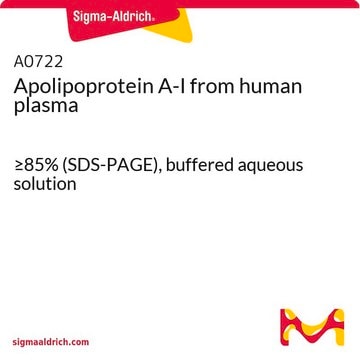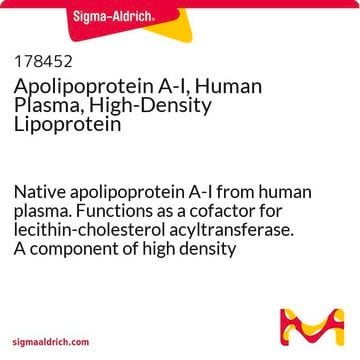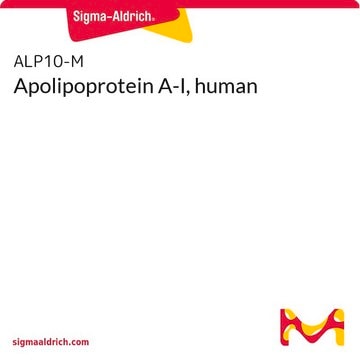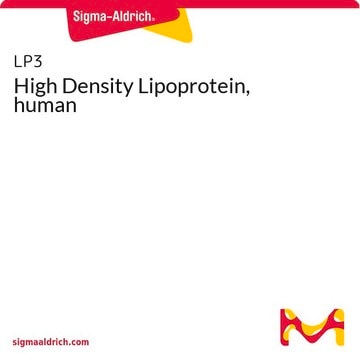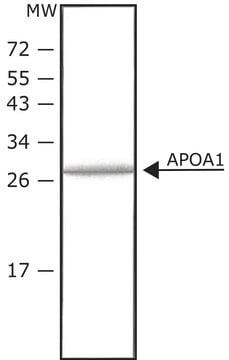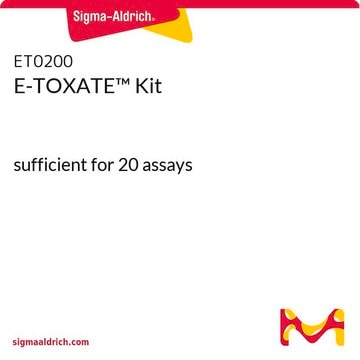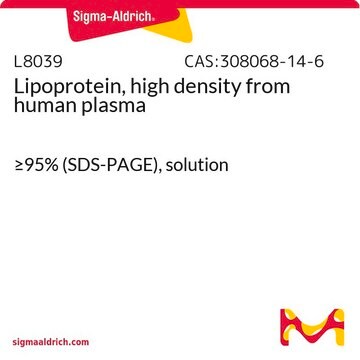SRP4693
Apolipoprotein A−I human
recombinant, expressed in E. coli, ≥97% (SDS-PAGE), ≥97% (HPLC)
Synonim(y):
APOA1, Apo-AI, Apolipoprotein A-I, C117399, MGC117399
Wybierz wielkość
1870,00 zł
Wybierz wielkość
About This Item
1870,00 zł
Polecane produkty
pochodzenie biologiczne
human
rekombinowane
expressed in E. coli
Próba
≥97% (HPLC)
≥97% (SDS-PAGE)
Formularz
lyophilized
masa cząsteczkowa
~28 kDa
opakowanie
pkg of 100 μg
warunki przechowywania
avoid repeated freeze/thaw cycles
zanieczyszczenia
endotoxin, tested
numer dostępu NCBI
numer dostępu UniProt
Warunki transportu
wet ice
temp. przechowywania
−20°C
informacje o genach
human ... ApoA1(335)
Szukasz podobnych produktów? Odwiedź Przewodnik dotyczący porównywania produktów
Opis ogólny
Działania biochem./fizjol.
Postać fizyczna
Uwaga dotycząca przygotowania
Rekonstytucja
Kod klasy składowania
11 - Combustible Solids
Klasa zagrożenia wodnego (WGK)
WGK 3
Temperatura zapłonu (°F)
Not applicable
Temperatura zapłonu (°C)
Not applicable
Wybierz jedną z najnowszych wersji:
Certyfikaty analizy (CoA)
Nie widzisz odpowiedniej wersji?
Jeśli potrzebujesz konkretnej wersji, możesz wyszukać konkretny certyfikat według numeru partii lub serii.
Masz już ten produkt?
Dokumenty związane z niedawno zakupionymi produktami zostały zamieszczone w Bibliotece dokumentów.
Klienci oglądali również te produkty
Active Filters
Nasz zespół naukowców ma doświadczenie we wszystkich obszarach badań, w tym w naukach przyrodniczych, materiałoznawstwie, syntezie chemicznej, chromatografii, analityce i wielu innych dziedzinach.
Skontaktuj się z zespołem ds. pomocy technicznej